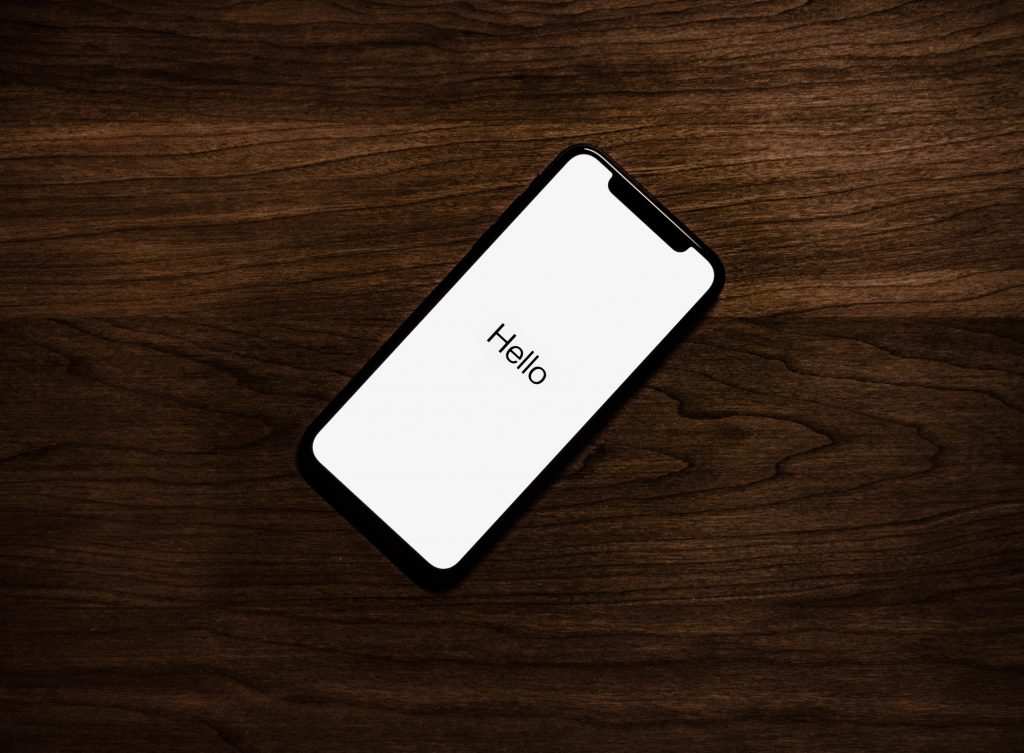Published on
Text-Based Learning: Should Students Be Learning From Their Phones?

Students who work to support their education are left with only a few precious hours in the day to focus on school outside the classroom. Reaching students where they are and giving them two or three sentences related to their coursework can be enough to stir up thoughts and ideas related to programming and make a difference for someone struggling to find the time to study.
The EvoLLLution (Evo): How can Continuing Ed divisions work to scale enrollments while ensuring they’re delivering a high-quality experience to their learners?
Frank Capadoccia (FC): We need to tackle delivering that high-quality experience first by making sure we are highly responsive and adaptive to learners when they’re looking for different things from us and seeking solutions to different problems and use that responsiveness as a differentiator. We’re interested in trying to find supports and engagement opportunities for learners at every step of the way. And then, using those as a platform to help them not only remain engaged but seek opportunities to connect to other parts of the campus ecosystem beyond CPL.
We haven’t always done a great job of doing that within Continuing Education at large. We might assume that learners are only in for a one-and-done type of course opportunity. But through my own experiences as a Continuing Education learner, I’ve always been interested in other aspects of the campus, of the organization I’ve been part of. Making sure the invitation is there for lifelong learners to be engaged and connected beyond just a single course or micro-credential is vitally important. That’s what I think is one of the keys to getting that expanded engagement underway.
Evo: How can Continuing Ed leaders take advantage of the global nature of higher education that exists today?
FC: There are a few things that Humber is actively pursuing that put us in the right position to do that. Global partnerships are a must. Many schools talk about partnerships, but they might be locally focused—whether it’s provincial, in the case of Ontario, or federal. We really must look at jurisdictions outside our typical day-to-day experiences and identify ways we can leverage those relationships. Business partners—for example Magna International, Ford and Honda—already function and operate in multiple countries. They tend to have local partners within those jurisdictions. So, it’s interesting for us as a postsecondary partner to say, “Hey, who are you working with in Argentina, India or China, and are those postsecondary partners aligned in terms of value sets and capabilities?” In our case, we have a polytechnic focus, so how can we leverage that?
The other option is federal bodies like Polytechnics Canada, a group for which Humber has been a founding partner. Looking into national groups and partners, whether it’s Colleges and Institutes Canada (CiCan), Polytechnics Canada or others, to identify when they are approached with international opportunities also works. And they’re getting different organizations, groups and nonprofits coming up to them, asking for a link to postsecondary partners all the time.
When those enquiries come, you need to be responsive and agile. Agility is the key term there. And, for us, working very closely with our international department as a business development partner is a must. It ultimately means looking at things beyond a domestic lens, considering how we can reach in and be supportive in a global context.
Evo: How much of an opportunity is there for students to work with these international partners?
FC: It’s tremendous, especially for students who are entrepreneurial. We have learners who take it upon themselves to reach out to those organizations. And when they do, they’re often well received—in terms of perhaps coming from a different cultural background and bringing that into a business that’s recently come to Canada or is operating very successfully internationally. Reaching out and making those connections are tremendously important. The other part is that some learners don’t realize how beneficial the Government of Canada can be in these kinds of things. I’m always encouraging learners to reach out to their local representatives and ask whether there are any international opportunities for them—governmental or not.
Evo: How is your team balancing international and domestic enrollment?
FC: From the Continuing Education side, I see a fair balance between the two. Many learners take our product internationally already. When I mapped where our CPL students come from, we’ve got learners from about 30 different countries. Just the other day, I discovered that we have a big pool of learners from Texas! So, sometimes unless you look at where that enrollment pool is coming from, you don’t realize you have these different communities of learners already.
For me it’s a balance. Quite a few learners have not had a ton of international opportunities but are keen to get out into the market space in a different way than they may have in the past. They are often looking at European and Australian prospects.
Evo: How can Continuing Ed divisions leverage and market stackable credentialing models, so they can transform a single enrollment into more of a lifelong learning engagement?
FC: I can’t understate the relationship factor. The learner must feel that they are an important part of the institution. That isn’t always the case. I’ve been a Continuing Education learner at three different institutions. Some have done a great job of cultivating the sense that they really want to keep on board, and others haven’t. What I’ve learned from those experiences—I’m currently doing my MBA through distance learning at the University of Cumbria in the U.K.—is that I want to belong and feel welcomed. I did my first master’s in the U.S., and what’s interesting are the different cultural pushes and pulls. So, how do we leverage it? We must be really honest and upfront about saying that a learner is a learner regardless of whether they’re full time, part time or in Continuing Education.
For Humber CPL, we’ve made a strategic decision to be primarily synchronous. When we’re doing our online education, we are doing it in real time. That’s another very tricky aspect right now. Asynchronous is predominantly the lead model. Most of my own MBA is done asynchronously, but it’s extraordinarily hard to connect with asynchronous learners in a meaningful, valuable way. Though, it is possible. Lots of people have done it well, but there’s a tremendous amount of extra work that goes into doing so. Roughly 80% of our product line is synchronous online learning, and we want to continue offering it synchronously. Finding tricks of the trade in digital technology, like text-based learning, is essential. Text-based learning can be used to emphasize or reinforce what you’re doing in the classroom. That’s the next big thing—where we can attach text-based learning capacity to a lot of the courses we’re delivering.
Evo: When you say text-based learning, what does that entail?
FC: Depending on whom you ask right now, there’s a lot of variation. On one side, there are full courses you can take on your cell phone. I don’t know how personally because I still miss my Blackberry for the keyboard. But text-based learning can be really interesting for people in retail-type positions, people working at a big box entity. You have select times in the day when you maybe get a text message that reinforces information or saying, “Do you remember the three things we covered last week? Why are those the most exciting to you?”
To be able to receive that at times that work for you is the best feature. It might be at 6 AM or 11 PM, but customization around when reinforcement comes is amazing. Several quick questions may be related to the curriculum we’ve been covering and help remind someone of what was discussed. I teach leadership, so for me it might be leadership-based questions. And what you get as a facilitator in those environments is real-time feedback. I’d know how many people actually opened my text and what they thought was most important to them as a learner. As the instructor/facilitator, you’re starting to see some good empirical evidence to reinforce or remap some of the learning.
Evo: Are there any other trends that Continuing Ed leaders should keep a close eye on in the next five years?
FC: The most important thing I’m seeing is the entry of private providers, particularly Google. I will call out Google Certificates and the concept of subscription-based learning i.e., we’ll pay you X amount per month, then take whatever we want and mix and match those things. For postsecondary, we need to do a better job of providing that level of flexibility within the next three years.
There must be more of a seamless processing, where you can combine full-time work experiences with prior learning and micro-credentials with some highly customized products. I do believe that in the next few years, you’re going to see people almost co-creating new diplomas and degrees. And this isn’t just combining a major and a minor but combining really different things and making something totally avant-garde that meets all the core criteria we are looking for within the PSE experience. I think institutions are already beginning to realize, and Humber is one of them.
We’ve got to start taking a much bigger lens on what it means to be a Humber graduate and really ensuring our core values are baked into every graduate. Accepting that is what’s going to be tricky, especially for very old and established traditional postsecondary institutions.
They are seeing this threat to what a diploma, degree, or master’s looks like and trying to determine what to do next. How do you achieve high flexibility while maintaining core values and academic rigor? It’s a very delicate and complicated balancing act.
You are seeing doctorates now that are achievable in three years. The Western University has a three-year EDD program. If you had told me ten years ago that there would be a three-year distance-based doctorate, I would have said that’s impossible. How could you even do that? These are the types of products and activities we can all expect to see in the months and years ahead.
This interview was edited for length and clarity.
Author Perspective: Administrator



